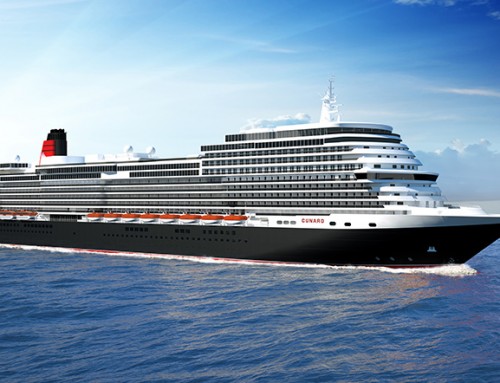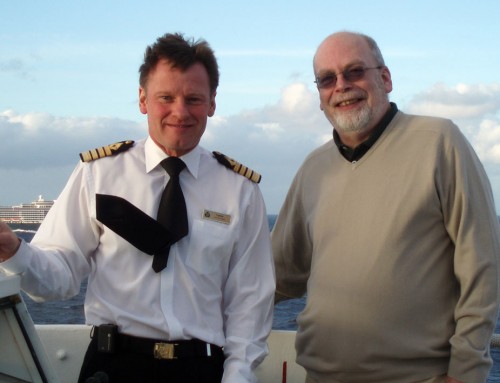When you’re designing a cruise ship, there are two factors which limit the size if you want to be able to send it anywhere in the world.
First, there’s height.
The Verrazano Narrows bridge at the entrance to New York harbour is 228 feet above the water. Norwegian Epic just about scraped through to get to her naming ceremony last week, and the shape of the funnel of Cunard’s Queen Mary 2 was significantly altered so the ship could use the port – essential for a liner making regular transatlantic crossings.
Surprisingly, it’s not so much of a problem for giants like Oasis of the Seas and Allure of the Seas; built at a shipyard in Turku, Finland, they have to pass under the slightly lower Great Belt Bridge in order to reach the open ocean. There’s 15 feet less to spare, and their funnels are designed to retract in order to make it through safely.
Then there’s width, or beam as it’s known in maritime terms.
If you want your ship to be able to transit the Panama Canal in order to travel between the Atlantic and Pacific oceans, the size of the locks dictates that the beam must be no more than 106 feet, and limits the length to 965 feet.
Height is also restricted by the Bridge of the Americas at Balboa, which has a clearance of 190 feet.
The biggest cruise ships built recently have ignored these restrictions and are not able to use the canal. RCI’s Voyager and Freedom class ships, for example, and vessels like Carnival Dream and Norwegian Epic can spend part of the year in the Caribbean and the rest in the Mediterranean, but would have to go a long way round to get to Alaska.
Work is under way on a $5.25 billion project to increase the size of the canal and double its capacity by 2014. The maximum size of ships able to use the Panama will increase to 160 feet beam and 1,200 feet length.
All of which is now becoming a factor in the design of cruise ships which have not even been ordered.
Speaking after the weekend’s launch of Nieuw Amsterdam, Holland America Lines’ CEO Stein Kruse hinted that, while it may be some years before the company has another new ship, it is likely that when it does arrive it will have the capacity for up to 3,000 passengers rather than the 2,100 limit on the current fleet.
“If we have a ship in Europe and we want her to be in Alaska, we want her to be able to go through the canal. After the canal’s enlargement, the beam will no longer be an issue. The question then is how big do you go?” he said.
I wonder if it’s a question also being considered by Roberto Martinoli, the president and chief operating officer of NCL, who will be switching next month to a new role in charge of newbuilds – although the line has no new ships on order.
CEO Kevin Sheehan will take over the title of president, and has shuffled other members of his executive team, with the bosses of hotel operations and finance both become “senior vice-presidents.” No change, apparently, for executive vice-president Andy Stuart, the popular Brit in charge of sales and passenger services.





Why oh why oh why would you start a massive project, messing about with such an iconic landmark as the Panama Canal because ships are getting wider? Surely it would be cheaper to just bear things like this in mind when building ships. Royal Caribbean and NCL for example have enough smaller ships anyway which can navigate the Panama Canal and do a season in Alaska. So what if Oasis or Allure or Epic are too big. We don’t need every ship to be able to do everything. If the Panama Canal gets widened, the amount of money required to complete the work is obscene. Where will it all end? how much bigger do the ships really need to get?
It’s not just cruise ships, James. Cargo ships have increased in size since the Panama Canal was built. There are huge tankers and, of course, container ships. All ships pay to use the canal. Panama will increase its revenues by increasing the size of the canal. They are doing it to make money, not to pour money away